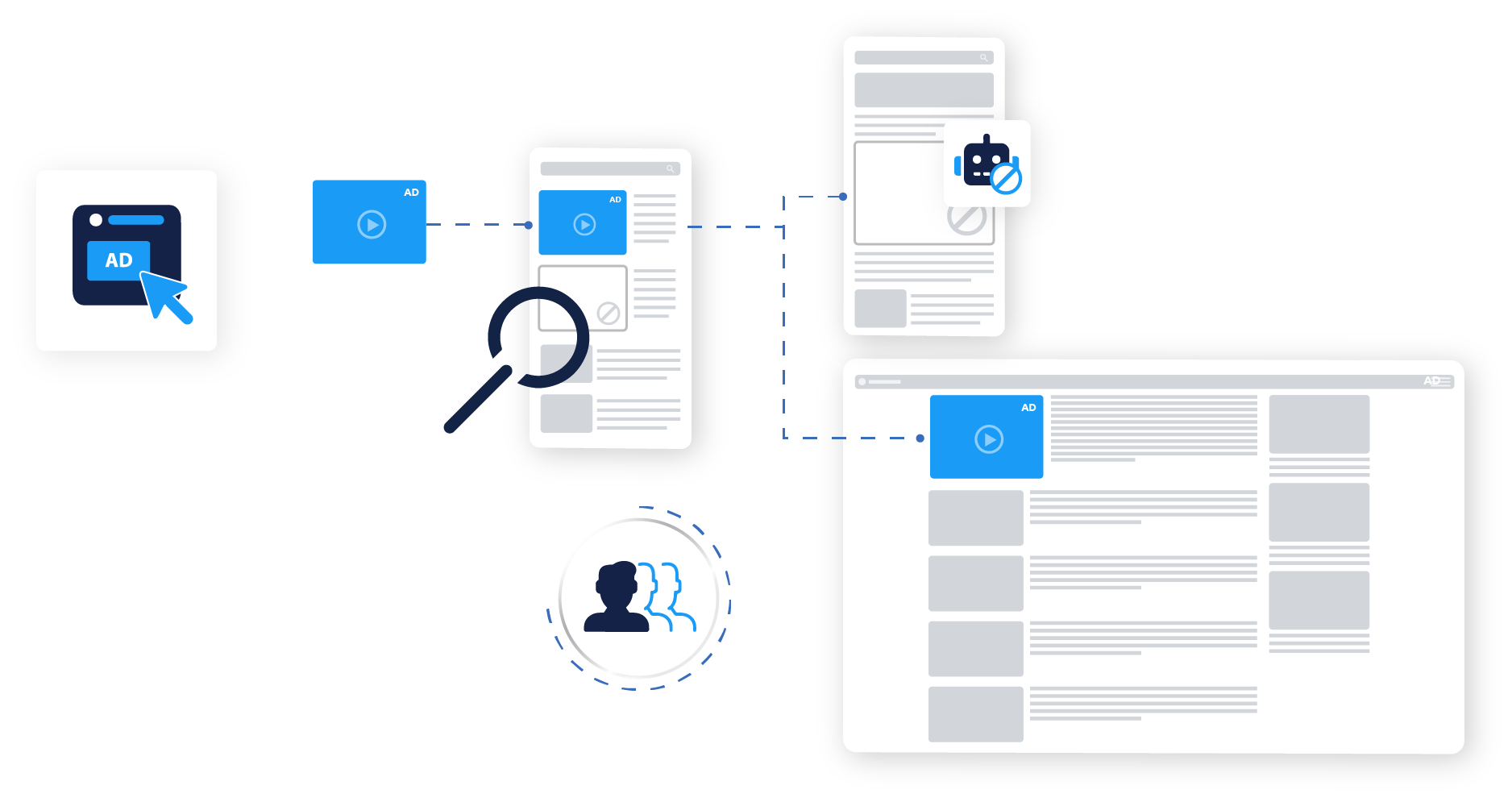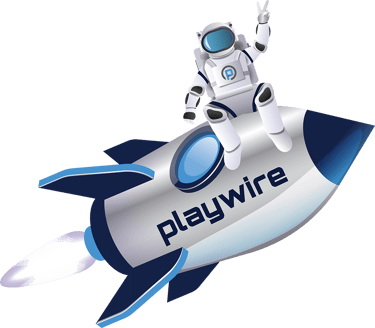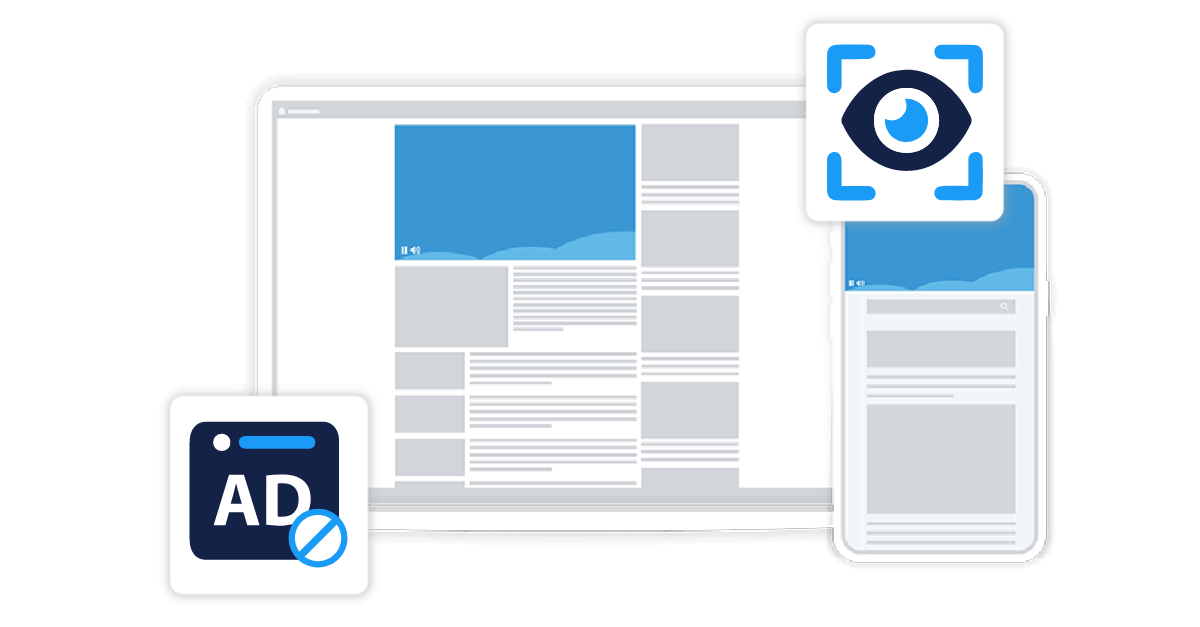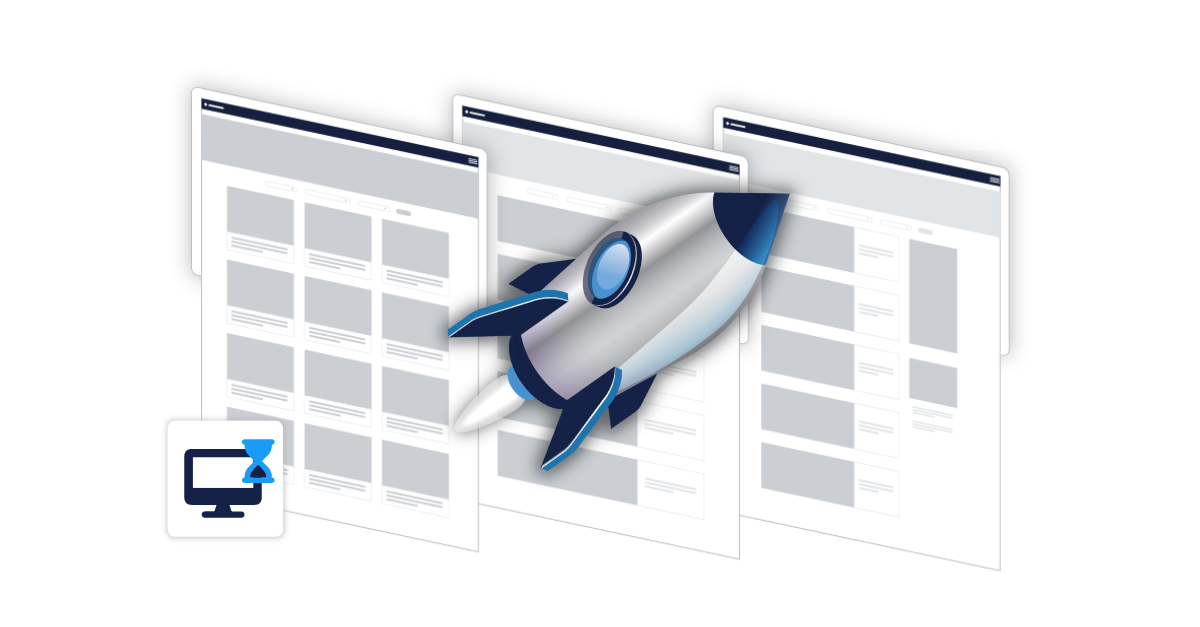An Overview of Ad Ops
February 1, 2023
Editorial Policy
All of our content is generated by subject matter experts with years of ad tech experience and structured by writers and educators for ease of use and digestibility. Learn more about our rigorous interview, content production and review process here.

Key Points
- Advertising operations (ad ops) is a necessary component of any ad monetization strategy.
- Building an effective and efficient ad ops team, however, involves a lot of time, money, and resources.
- The cost of building out an in-house team is steep. Partnering with Playwire is more affordable and will provide all the benefits of an in-house team and more.
Ad ops has two critical objectives:
- Objective 1: Deliver the best possible viewer or user experience.
- Objective 2: Efficiently display relevant, high-quality online ads.
How hard can doing two things be?
Turns out: fairly hard.
To say ad ops — advertising operations — is a complex process is like saying you should put gas in the car to win the Indy 500.
Yes, you’ll need gas in the car. But also much, much more.
To achieve pretty much any goal as far as digital ad operations go, you need a sophisticated team of trained ad ops professionals, a fully-fledged ad tech stack, and a comprehensive ad monetization strategy.
Think of it like a racing team. You (the publisher) are the driver. Your ad tech stack is the race car. Everything else is ad ops. Your pit crew: ad ops. The track, the broadcasters, the sponsors: all ad ops.
As the driver, you need to understand how everything works if you have any hope of seeing that checkered flag first.
So, what’s it going to take to optimize your ad operations?
Full-scale understanding, to start.
So, that’s the green flag.
-- Article Continues Below --
Read The Complete Guide to Ad Ops For Publishers
What is Ad Ops?
Ad operations describe the entire process of managing a digital ad campaign.
The tasks involved include —
- Establishing objectives
- Campaign targeting
- Strategy
- Setup
- Campaign launch
- Campaign management
- Optimization
- Real-time adjustments
- Ad inventory management
- Problem-solving
- Risk mitigation
And the people who manage those tasks include —
- Management team: oversees the traffic, analyst, account, and creative teams.
- Analysis team: a group of ad ops analysts who specialize in campaign strategy and day-to-day management.
- Traffic team: responsible for ad campaign setup and launch based on strategic information provided by the team of analysts.
- Account team: manage client relationships for some ad ops teams, especially larger ones. In smaller ad ops teams, this role can be fulfilled by an ad sales team (you’ll find more detail on this team listed below).
- Creative team: designs, develops and creates custom ad creatives for direct-sold campaigns.
- Supply team: manages ad unit inventory to find supply and increase demand.
- Sales team: sells campaigns to advertisers through pre-sales meetings, package pricing, sales calls, contract negotiation, and sometimes campaign management. Within Playwire, this is also known as our Direct Sales team.
- Product team: manages the entire ad tech stack and troubleshoots all product, advertising campaign, and software problems.
- Engineering team: navigates the high-tech jumble of ad management technology to resolve sophisticated problems with code, integrations, or any other critical malfunctions.

Always a New Model: Ever-Evolving Publisher Ad Ops
Ad ops is constantly evolving, by the way.
You might have the process mastered, only for technological advancement to upend the whole system. It’s not a matter of “if” but “when”.
One example: Improvements in programmatic advertising have transformed ad ops, with programmatic ad purchases now making up 85% of transactions.
What is programmatic advertising? There’s not really a one-sentence answer to that question, but if we had to, we’d say…
Programmatic advertising is mostly automated digital advertising.
(Hungry for MORE info there? Check out our guide to programmatic advertising to go deep.)
-- Article Continues Below --
Check out our Complete Ad Ops Resource Center
Why are we discussing programmatic advertising again? Because the result of this singular advancement was industry-changing.
We now focus on automated methods instead of only direct sales.
Ad tech service providers now offer more DIY shortcuts that make automation more accessible than ever before.
These days, any directly sold campaigns primarily target high-value clients, which actually makes it easier for ad ops teams to focus their efforts on the big players.
The industry and all its players had to adapt.
And it will happen again. And Again.
We’ll all have to adapt to new tech in the future. Which makes this such a hard race to follow. And a huge reason specialists, like Playwire, exist is to help businesses like yours keep up.
The Future of Ad Ops
These days, ad ops needs to be less about traditional campaign execution and more about both strategy and managing the growing complexity of the ad tech industry.
To do this, there used to be just two options: build and manage your own ad operations team internally or partner with an outsourced ad ops team. However, at Playwire, our belief is that a hybrid of the two is the true future of ad operations.
Playwire’s RAMP Platform offers control without the burden of managing an ad ops team.
Backed by a team of experts managing all the pieces of the ad tech stack for you as well as keeping an eye out for ad fraud, our ad operations team manages settings across the ad tech stack, optimizes header bidding integrations, and runs ad campaigns across the ad network. All the while, you have complete transparency into how your ad revenue is generated.

Ad Monetization Strategy
Ad monetization is the destination and ad ops is the vehicle that gets you there.
That’s why ad operations must stay focused on strategies and advertising campaign performance optimization. When done right, you’ll be able to increase the value of your ad inventory and subsequently your ad yield.
Are you clocking those rounds?
Start with these KPIs —
- CTR: click-through rate, which measures how many of your visitors actually clicked on the ad.
- Viewability: how many views an ad receives. IAB standards say ads that are at least 50% viewed count as viewed.
- Video completion rate: the length of time visitors watched a video ad.
If these metrics look good, you can rev. If something looks off, have a member of the product or analyst teams check it out.

Here are a few more things to think about —
- Refresh rate: the rate at which a new ad is displayed. This metric determines whether you can squeeze multiple views from one ad placement.
- Ad format: the type of ad being displayed to your visitors. You can shuffle these around to get a better idea of how they impact your RPMs.
- Ad placement: the physical location of an ad. Similar to ad formats, you can play with this to see how it affects your stats.
- Page load speed: this is a key metric for user experience. Always keep this in mind when making changes and keep this number as low as possible. If you’re interested in learning more about this, we recommend that you check out our series of tips on how to improve your website’s page load speed.
- Malicious ads: these take visitors off your site before they can scroll too far, which not only hurts your visitor’s experience but also damages your viewability rate.

Poor ad performance across your KPIs = angry algorithms.
If you want DSPs (the platforms that allow advertisers to find and purchase your inventory) to funnel supply to your site, your monetization strategy needs to focus on these numbers.
Otherwise, you’ll watch your revenue goals lag and lag and lag.
-- Article Continues Below --
GTPlanet Sees 36% Year-Over-Year Increase in Revenue with Playwire
Best Practices for Building a Successful Ad Monetization Strategy
Yes, there’s more to think about.
Here are some good habits to help you optimize your ad monetization strategy —
- Familiarize yourself with the ad tech ecosystem: it’s messy and complicated, but understanding the tech will make a huge difference when it comes time to work with SSPs as well as other demand partners.
- Master managing your ads.txt file: this is how you ensure you partner with the right demand sources while also making sure the ads your visitors see are relevant and high-quality.
- Manage your exchange partner settings: don’t make the common mistake of not examining your settings. The best way to deliver relevant, quality ads to your visitors is by manually adjusting the default settings.
Master Ad Ops With Playwire
By now, you’ve probably gathered that building out your own advertising operations team to handle all the above tasks is… a lot.
A lot of work. A lot of time. And a lot of money.
Most publishers don’t earn enough revenue to support an effective and efficient in-house ad ops team, or they aren’t too keen on having to invest heavily up-front only to hope the ad revenue starts rolling in to support it.
What are your other options?
Since publishers need an ad ops strategy to successfully meet their ad revenue objectives, there’s really only one alternative.
Playwire is a turnkey ad monetization solution that provides publishers with a highly-skilled and experienced ad ops team that is committed to amplifying your ad revenue. Plus, you get ad tech stack management and direct sales support.
We get everything set up for you and perform all the day-to-day operations required to deliver a truly optimized ad monetization strategy and throughout it all, you have complete transparency into your site or app’s performance through our powerful Advanced Yield Analytics.
The end result is a streamlined and simplified solution that performs better than any in-house team could, at a fraction of the cost and with a fraction of the headaches.
If you’re ready to amplify your ad revenue, get our crew in your corner.


-1.png?width=800&height=157&name=1-playwire-logo-primary-2021%20(1)-1.png)





